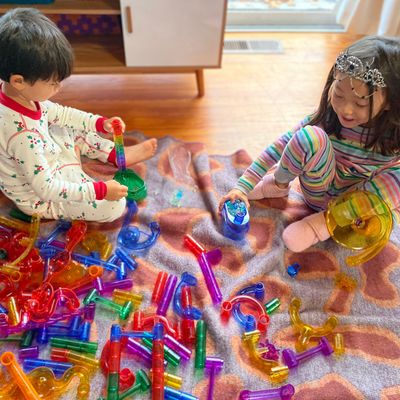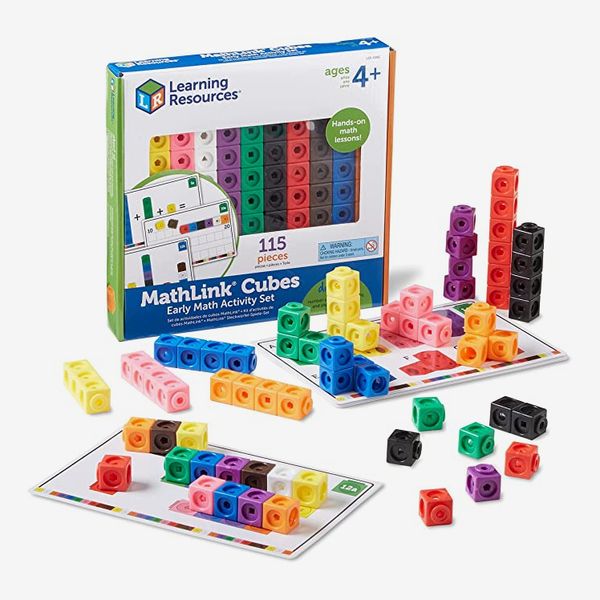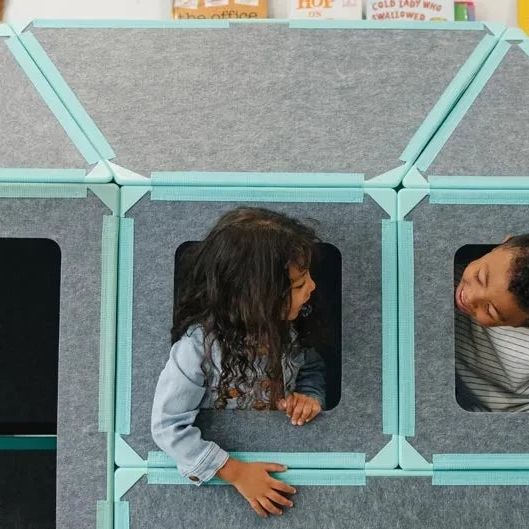
The modern toy world likes to tempt parents with colorful, battery-operated, fancy-looking playthings, but the toys that stand the true test of time are simple, open-ended building toys. I say this as a parent of two kids, ages 6 and 8. I’ve also worked on children’s physical- and digital-toy development for 15 years, started the team behind NYT “Parenting,” and, in the process, I’ve talked to hundreds of parents exhaustively about how and what their kids play with.
“Open-ended toys” is developmentalspeak for toys with which there’s no prescribed way to play. Depending on the kid, the environment, their age, and their imagination, they can use them how they want. A good open-ended building toy — whether blocks, Magna-Tiles, LEGOs, or marble runs — is made to withstand hard and repeated usage. The best are usually made of wood or a durable plastic and can handle a lot of stacking, falling, and washing. They are modular, so it’s okay if you lose a piece under the couch, unlike with a jigsaw puzzle, and you can infinitely expand on sets that your kid loves. We often use all of these toys in combination; LEGO rooms accompany Magna-Tiles parking garages inside Superspace forts and are connected with marble-run bridges. It makes for an ever-evolving march of beautifully colorful structures that are easy to throw back into baskets when your kid finally declares it okay to stop playing and clean up.
I’ve found that having bins and baskets that sit within reach of my kids makes it much more likely that they go for these toys — and also makes it more likely they’ll help clean up. Even though it adds visible chaos, it’s worth it when I hear them pad out of their room before the sun is up and head straight for the blocks instead of waking me up. You can also rotate different toys out every few months, because there’s nothing kids love more than novelty.
Often the hardest thing for me is to step back and try not to “fix” or guide my kids’ construction. Letting them build imbalanced structures that you can tell will come crashing down has caused plenty of tears, but I try to remind myself that the more cause-and-effect they experiment with, the more adept they become at manipulating the materials. Kids are tiny scientists, and I find my kids’ brains can often imagine far more possibilities than mine. When I see the marble run, I feel like I should build a marble run. But my 5-year-old sees the pieces as a leprechaun-catcher, a fireworks-launcher, and a slushy machine. In fact, he has only ever once actually used it as a marble run. Maybe one day he’ll use it for that purpose, but in the meantime, it’s keeping him extremely occupied, which is the truest sign of a successful toy.
When I think of classic preschool building blocks, it’s these wooden building blocks that come to mind. They’re made for little hands, are indestructible, and come in a variety of shapes ranging from triangles and cylinders to arches and wedges. It’s an excellent first block set that can be transformed into furniture for a stuffed animal or made into a parking garage for toy cars.
For those looking for a block set that doubles as chic home décor, Grimm’s Large Stepped Pyramid Blocks come in a rainbow of tones colored with nontoxic water-based stains. This German company is famous for its gorgeous wooden puzzles, stacking toys, and blocks, and this set, made of a hundred 1.6-inch cubes, gives the kid plenty of material to experiment with, without the overwhelm of too many shape variations. These are particularly fun for making balancing towers, organizing by color (and practicing the names of colors), and creating giant rainbow snacks on the floor.
For more advanced builders with developed fine motor skills, Keva planks are uniformly cut pine planks that can be stacked into shockingly elaborate structures. While the planks look deceptively plain — and you might ask yourself why you’re buying a big box of wooden planks — you’ll be surprised with the creations your kid comes up with. And if you want, there’s a wide world of building challenges you can find online that invites kids to experiment with balance, physics, architecture, and geometry.
Recently, Magna-Tiles — the ingenious magnetic toy tiles made of colorful plastic squares and triangles that can be combined in infinite permutations — added thematic sets of specialized tile packs. Ranging from Arctic Animals to Dino World to this Builder set, they offer new surface patterns, like bricks and pavement, and new shapes, including rectangles, sections of curved road, staircases, and window pieces. Many of them come with movable animals and dinosaurs, adding new opportunities for imaginary play. There are also sets that offer unique tile finishes like mirror and glitter, which are very coveted add-ons in our house.
Like many other second-graders, my son is deep in the era of his Minecraft obsession. If he’s not playing Minecraft, he wants to talk about Minecraft, even when nobody else in the family understands what “Redstone” or “The Nether” are. One of the ways we’ve begun to understand each other is by talking about Minecraft while he plays with these magnetic Minecraft blocks. They take the digital elements and translate them into connectable, physical toys. While this set doesn’t offer the full inventory offered in the digital version, it does offer key materials like brick, grass, water, ore, and avatars of main characters among others. You can choose among themes, like Forest, Glacier, or Dashing, which provide different sets of materials within the 100-piece packs and can all be used interchangeably. Now my kid can show me what he’s crafting and make creations that inspire his in-game play as well.
A close relative of the Minecraft blocks are these magnet cubes. They’re great for littler hands that find stacking non-magnetic blocks frustrating, or aren’t quite ready for Magna-Tiles or PicassoTiles’ comparable magnetic tile set yet. These colorful, solid magnetic cubes snap together in a satisfying way, and can be used in conjunction with a lot of the other toys featured here, whether wooden blocks, other magnetic toys, or as play objects within a Superspace structure.
Another magnet-based building toy that gets a lot of mileage is the Clixo Super Rainbow set. These pieces are compact, lightweight, portable (unlike Magna-Tiles), and made of a durable synthetic paper that can be bent, twisted, and combined to make toys, crowns, bags, or abstract sculptures. The magnets come in a variety of organic shapes, and with these, it’s the lack of rigidity that opens the door for fun. They can be wrapped around the handles of a kid’s scooter, looped together to make decorations, or worn as a bold accessory, which is how my daughter often chooses to use them.
Our favorite travel blocks are Plus-Plus blocks, which have kept my kids busy in the back seat for hours. This Denmark-based company has adopted the single-shape, millions-of-possibilities approach, with a proprietary building block made of recycled plastic that looks like its name suggests — two plus signs strung together. They come in two sizes: big, recommended for kids under 6, and standard blocks, recommended for 5 and up, and the pieces interlock without any joinery. My kids love that you can make both two- and three-dimensional structures and that the blocks come in tons of colors. You can get neon sets, holiday colors, a glow-in-the-dark version, and stocking-stuffer-size tubes with 70 pieces up to tubs with 3,600 pieces.
My daughter came home from kindergarten with math cubes one afternoon, a tactile tool often used at school or by parents for teaching math concepts. But my kids were more interested in using them to create cars, robots, lightsabers, and buildings rather than for counting or doing addition. Little did they know that in playing with these, they’re often engaging their brain in this learning anyway as they stack and arrange the cubes in their own structures. The colorful plastic cubes snap together on all six sides in notched-out circles, making them less delicate than other building options prone to toppling over. They’re also small and portable, making them an ideal toy for travel or to throw in a go bag.
After we had the world of geometric building toys covered, my 5-year-old started to take an interest in screwdrivers, drills, gears, and wheels. This Brio Builder Creative Set offers a wealth of wheels, axles, bolts, planks, cranks, hooks, and more so kids can experiment and create any number of machines, robots, and contraptions. Kids have to experiment to figure out which pieces fit with the others and navigate the physics required to make their creations balanced and functional (if they want). It’s a great introduction to both tools and simple machines while embracing the anything-is-possible spirit of blocks.
My son’s love of building was evident from very young, so for his fourth birthday, I was determined to find a marble run that would be manageable for his small hands. While I considered some of the gorgeous wooden marble sets at first, we ended up selecting this National Geographic glow-in-the dark marble run that offered a wider variety of tube, base, and unique track pieces that twist, turn, and spin marbles down the run. In the first two days, we built increasingly elaborate runs as a family, and my kids quickly learned which orientation the pieces needed to face in order for the marbles to roll down the track. Over time, they started to use these pieces to create their own non-marble-run creations.
It makes sense given the popularity of Magna-Tiles that someone would think to supersize them, which is exactly what Superspace does. Offering square, triangle, trapezoid, rectangle, and window shapes made of eco-felt with magnetic edges, kids can create houses, rocket ships, and all kinds of creations that they can also climb into and play within. There are add-ons for specific shapes, or for features like chalkboards and whiteboards, so kids can turn a building into a school, a shop, or anything they imagine.
My kids have put this flexible spoke-and-wheel fort-building kit through its paces, proving that it’s as durable as it is flexible. They make a lot of classic forts, with a sheet or blanket thrown on top, and also like to bring their night-sky projector in there at night. There are lots of reasons kids build forts — including having a space of their own, and having a space to feel safe — and this system offers just enough of a framework to encourage kids to customize, experiment, and hide out.
The Strategist is designed to surface the most useful, expert recommendations for things to buy across the vast e-commerce landscape. Some of our latest conquests include the best acne treatments, rolling luggage, pillows for side sleepers, natural anxiety remedies, and bath towels. We update links when possible, but note that deals can expire and all prices are subject to change.



















